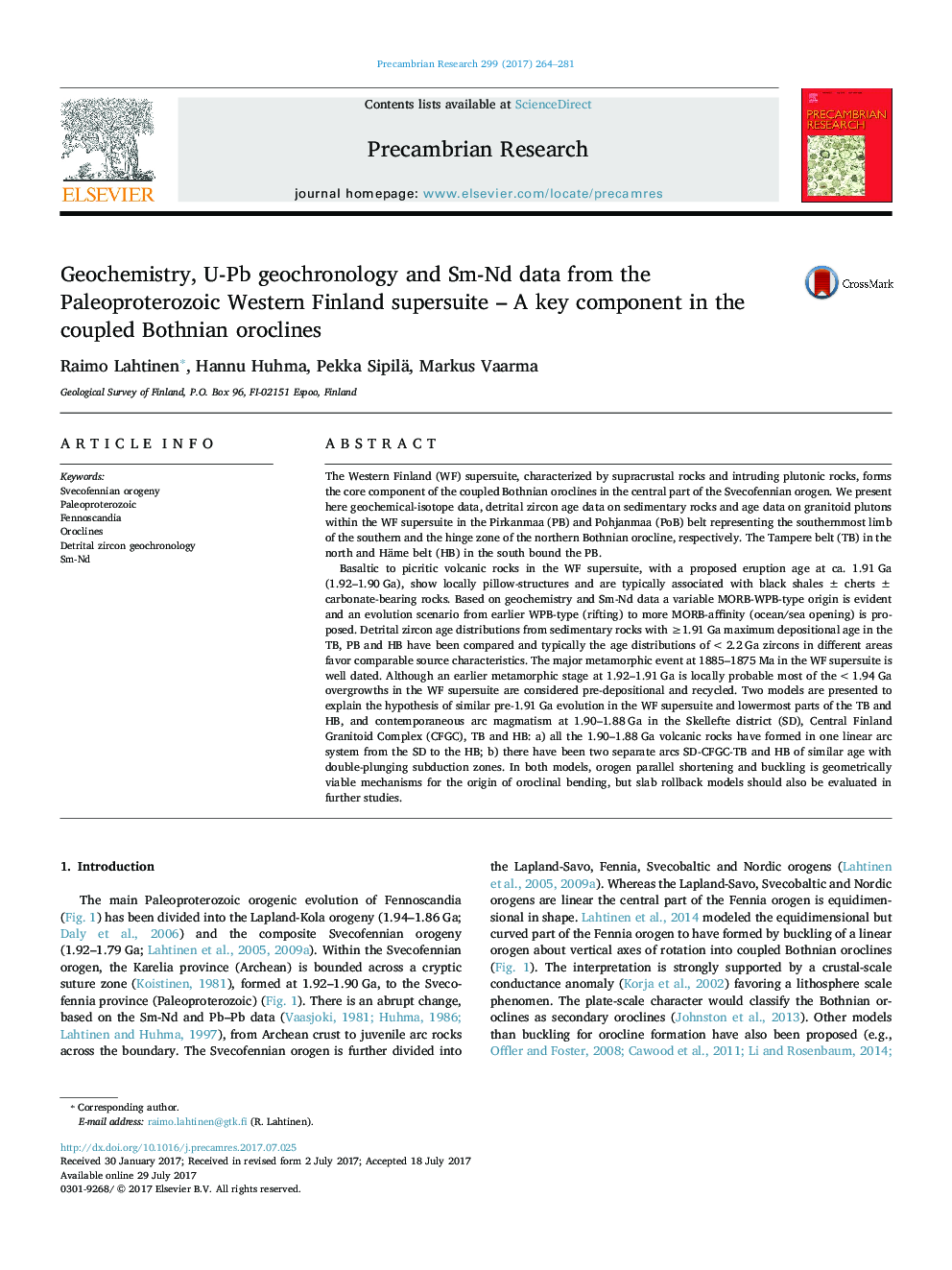| Article ID | Journal | Published Year | Pages | File Type |
|---|---|---|---|---|
| 5784718 | Precambrian Research | 2017 | 18 Pages |
Abstract
Basaltic to picritic volcanic rocks in the WF supersuite, with a proposed eruption age at ca. 1.91 Ga (1.92-1.90 Ga), show locally pillow-structures and are typically associated with black shales ± cherts ± carbonate-bearing rocks. Based on geochemistry and Sm-Nd data a variable MORB-WPB-type origin is evident and an evolution scenario from earlier WPB-type (rifting) to more MORB-affinity (ocean/sea opening) is proposed. Detrital zircon age distributions from sedimentary rocks with â¥1.91 Ga maximum depositional age in the TB, PB and HB have been compared and typically the age distributions of <2.2 Ga zircons in different areas favor comparable source characteristics. The major metamorphic event at 1885-1875 Ma in the WF supersuite is well dated. Although an earlier metamorphic stage at 1.92-1.91 Ga is locally probable most of the <1.94 Ga overgrowths in the WF supersuite are considered pre-depositional and recycled. Two models are presented to explain the hypothesis of similar pre-1.91 Ga evolution in the WF supersuite and lowermost parts of the TB and HB, and contemporaneous arc magmatism at 1.90-1.88 Ga in the Skellefte district (SD), Central Finland Granitoid Complex (CFGC), TB and HB: a) all the 1.90-1.88 Ga volcanic rocks have formed in one linear arc system from the SD to the HB; b) there have been two separate arcs SD-CFGC-TB and HB of similar age with double-plunging subduction zones. In both models, orogen parallel shortening and buckling is geometrically viable mechanisms for the origin of oroclinal bending, but slab rollback models should also be evaluated in further studies.
Keywords
Related Topics
Physical Sciences and Engineering
Earth and Planetary Sciences
Geochemistry and Petrology
Authors
Raimo Lahtinen, Hannu Huhma, Pekka Sipilä, Markus Vaarma,
